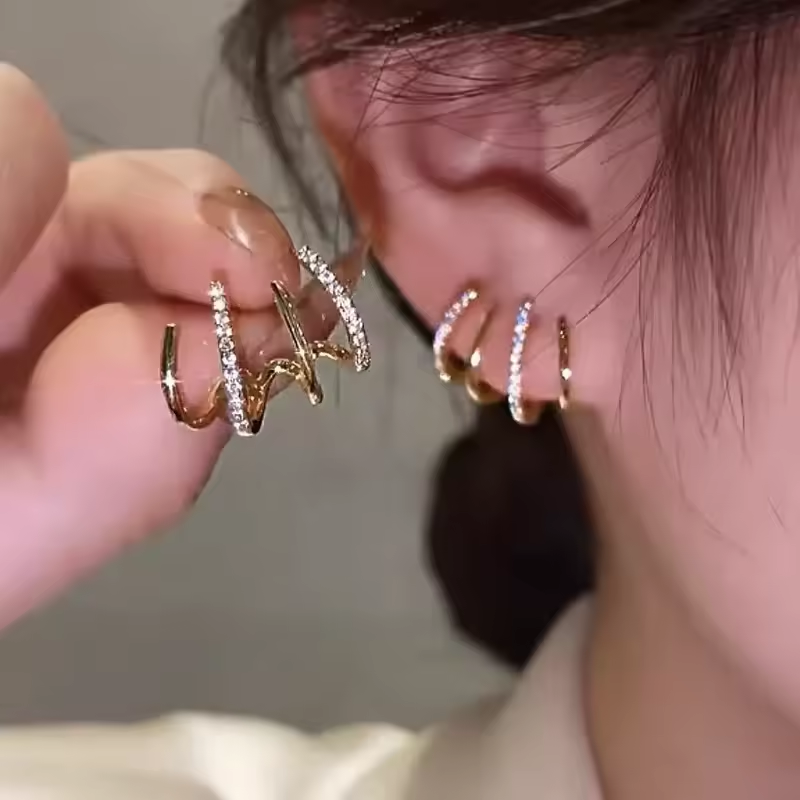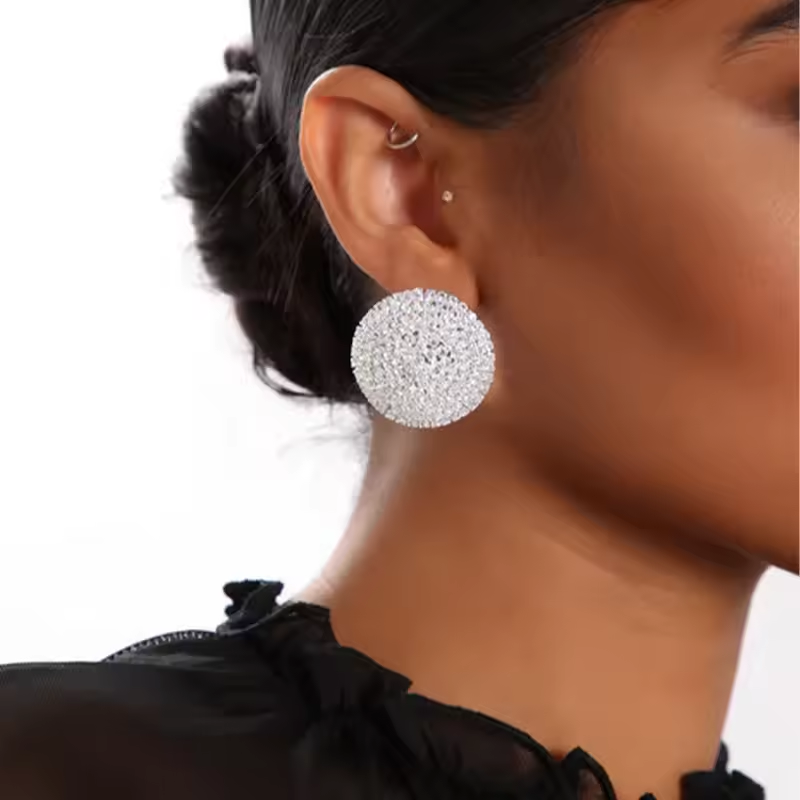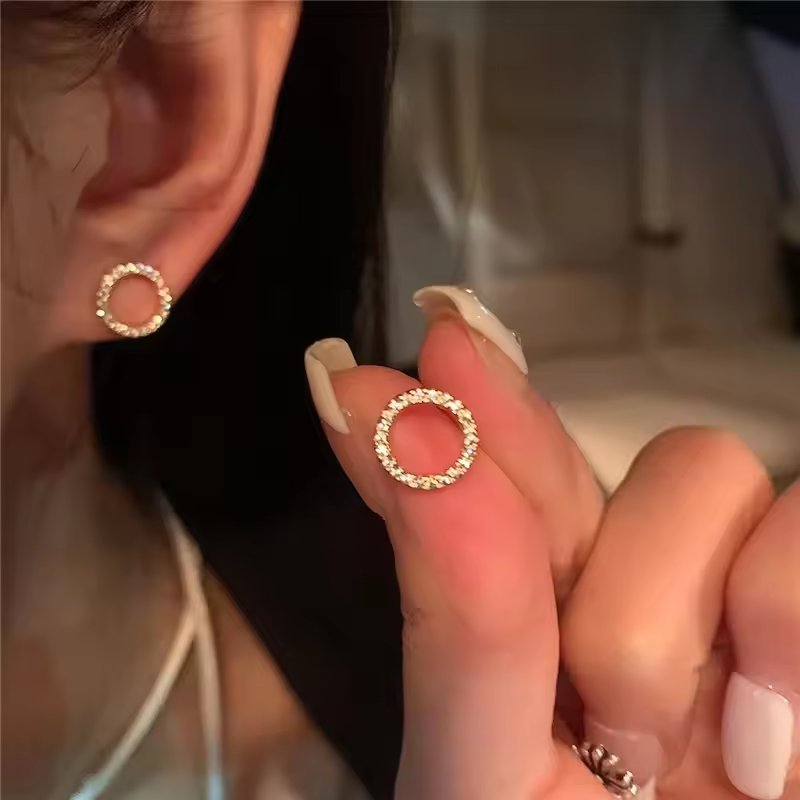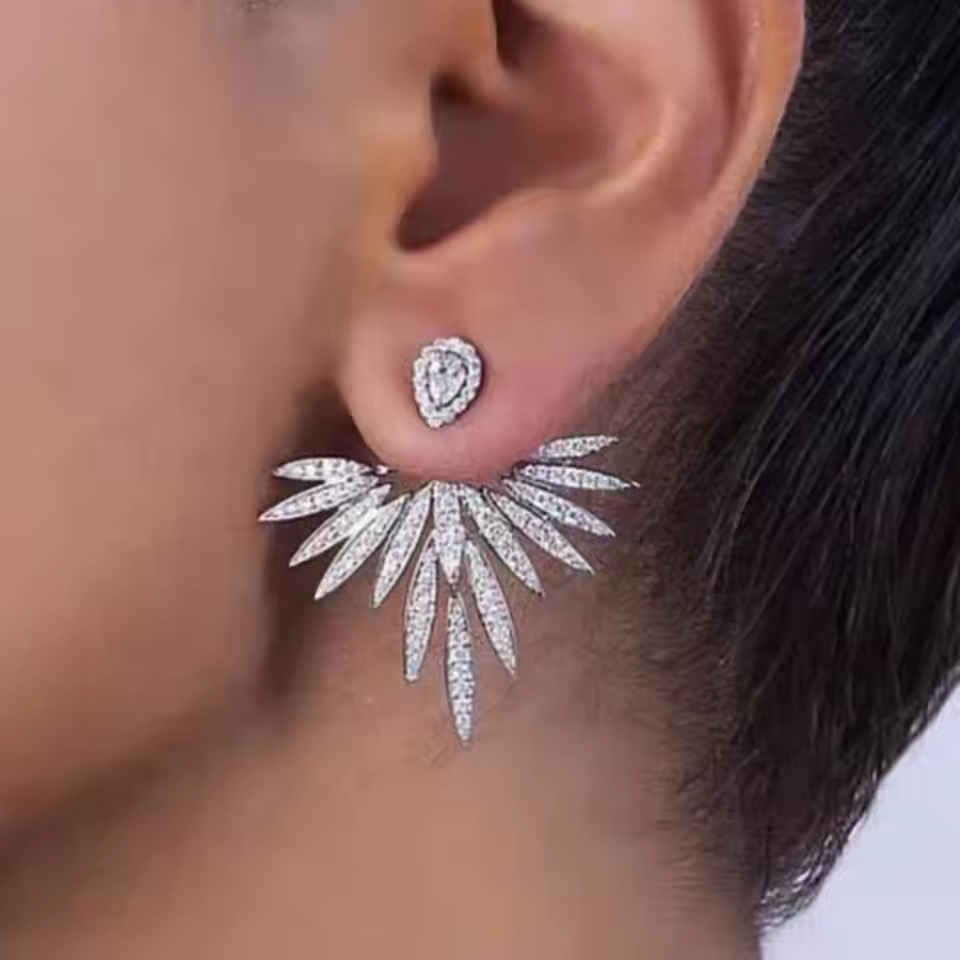The Cultural and Historical Significance of Diamond Earrings
Diamond earrings have been symbols of power, wealth, and beauty for millennia. Their journey from ancient adornments to modern staples reveals fascinating cultural shifts.
Ancient Origins
- Egypt: Pharaohs wore gold hoops with colored gemstones, not diamonds, due to limited mining. The Egyptians associated gold with the sun god Ra, while gemstones like lapis lazuli symbolized royalty.
- India: The earliest known diamond mines were in Golconda, with diamonds traded as status symbols. The Indian text Arya-Manusha describes diamonds as “tears of the gods,” believed to grant wisdom.

Victorian Era Innovations
- Settings: Prong settings became popular, showcasing diamonds without excessive metal. Queen Victoria’s preference for minimalistic designs influenced middle-class trends.
- Social Meaning: Diamond studs symbolized marital fidelity; hoops were reserved for unmarried women. This tradition persisted until the 20th century.
Modern-Day Evolution
- Gender Fluidity: Diamond earrings for men gained traction in the 2010s, breaking traditional norms. Celebrities like Timothée Chalamet and Harry Styles popularized them as symbols of individuality.
- Sustainability: Lab-grown diamonds emerged as a response to ethical and environmental concerns. Today, 30% of consumers prioritize eco-friendly jewelry, per a 2023 McKinsey report.
The 4Cs of Diamond Quality: A Technical Deep Dive
The 4Cs are not just grading standards—they’re a language of precision. Let’s dissect each criterion with technical rigor.
Cut: The Geometry of Brilliance
- Proportions: Table size (percentage of the top surface) and depth percentage determine light return. A 56% table and 60% depth optimize sparkle.
- Symmetry: Misaligned facets scatter light, reducing sparkle. A “very good” symmetry grade ensures consistent light reflection across the stone.
- Polish: Surface imperfections degrade brilliance. A “good” polish grade is acceptable for earrings, as flaws are less noticeable than in rings.
Clarity: Flaws and Their Visibility
- Inclusion Types: Pinpoints (tiny crystals), feathers (cracks), and clouds (hazy areas) affect durability and aesthetics. A 1ct diamond with a SI1 clarity may have inclusions visible under 10x magnification but appear flawless to the naked eye.
- GIA Grading Scale: FL (Flawless) to I3 (Included) explained with microscopy examples. FL diamonds are rare, accounting for just 0.01% of mined stones.
- Loupe Test: Flaws below 10x magnification are considered “eye-clean.” Most consumers opt for SI1-SI2 grades for cost savings.
Color: The Science of Whiteness
- Grading Lights: Diamonds are graded under controlled daylight-equivalent lighting. A “G” grade appears nearly colorless but costs 15% less than an “F” grade.
- Fancy Colors: Rare hues like pink or blue are graded on saturation and rarity. A vivid pink diamond can cost 10x more than a colorless one.
Carat: Weight vs. Visual Impact
- Density Variations: Diamonds with higher refractive indices (2.42) appear larger. A 0.8ct diamond with ideal cut may outshine a poorly cut 1ct stone.
- Millimeter Guide: 0.5ct ≈ 5mm diameter; 1ct ≈ 6.5mm. For earrings, 0.5–1ct stones balance size and affordability.

Metal Settings: Chemistry, Durability, and Aesthetic Impact
The choice of metal isn’t just about style—it’s a chemical and structural decision.
Gold: Alloys and Their Properties
- 14k Gold: 58.3% pure, with copper/zinc alloys enhancing durability. Ideal for everyday wear, as it resists scratches better than 18k gold.
- White Gold: Rhodium-plated to mimic platinum; plating lasts 1–2 years. To maintain its shine, have it re-plated annually.
- Rose Gold: Copper-rich alloys create warm hues. A 2019 survey by the Jewelry Information Center found rose gold earrings outsold yellow gold by 20% among millennials.
Platinum: The Noble Metal
- Purity: 95% platinum mixed with iridium or cobalt for hardness. Platinum’s density (21.4 g/cm³) creates a luxurious feel.
- Allergies: Rare, as platinum is hypoallergenic. Suitable for those with sensitive ears.
- Weight: 1.3x denser than gold, making earrings feel substantial.
Silver: A Lightweight Option
- Sterling Silver: 92.5% pure, with copper for strength. Affordable and versatile, but tarnishes over time.
- Tarnish Prevention: Store in anti-tarnish pouches lined with activated charcoal to slow oxidation.
Lab-Grown Diamonds: The Ethical and Economic Revolution
This section explores lab-grown diamonds from production to consumer impact, backed by industry data.
Production Technologies
- CVD Process: Grow diamonds in a vacuum chamber using methane gas. This method produces Type IIa diamonds, which are 99% pure and colorless.
- HPHT Process: Mimic Earth’s mantle conditions with extreme pressure (60,000 atmospheres). HPHT diamonds are cheaper but may have internal graining.
Market Growth
- Statistics: Lab-grown sales grew 25% annually since 2015 (source: Bain & Company). By 2030, they could account for 20% of global diamond sales.
- Price Gap: A 1ct lab-grown diamond costs 1,500–3,000 vs. 6,000–15,000 for mined. This accessibility has made diamond earrings affordable for younger buyers.
Ethical Certifications
- IGI Reports: Include “lab-grown” labeling. The FTC mandates this to avoid confusion with mined diamonds.
- Carbon Footprint: 10–20% lower than mined diamonds. A lab-grown 1ct diamond emits 0.2kg CO₂ vs. 1.2kg for mined.

Custom-Made Earrings: From Concept to Heirloom
Custom jewelry is an art form requiring collaboration between client and jeweler.
Design Collaboration
- CAD Software: 3D modeling allows virtual adjustments. Clients can rotate designs on-screen and request changes in real time.
- Material Choices: Mix metals (e.g., rose gold with white gold accents) or combine diamonds with colored gemstones.
Ethical Customization
- Carbon-Neutral Production: Offset emissions via tree-planting programs. For example, a custom earring set might fund 10 new trees.
- Conflict-Free Materials: Ensure recycled gold and lab-grown diamonds. Some jewelers partner with NGOs to audit supply chains.
Cost Breakdown
- Design Fees: 200–500 for sketches. Complex designs may require multiple iterations.
- Production Costs: 800–3,000 depending on complexity. A pave-set halo earring costs more than a simple stud.
Wedding Diamond Earrings: Tradition Meets Innovation
This section explores bridal jewelry from historical roles to modern trends, supported by wedding planner insights.
Cultural Symbolism
- India: Jhumka earrings are mandatory in many weddings for good luck. The jhumka’s bell shape represents fertility, and gold symbolizes purity.
- Western Cultures: Studs paired with engagement rings symbolize marital unity. In Jewish traditions, a hamsa pendant may be incorporated.
2024 Trends
- Stacked Sets: Mix 0.5ct studs with 1ct drops for versatility. A bride might wear studs during the ceremony and switch to drops for photos.
- Monogrammed Earrings: Engrave initials or wedding dates on the back. For example, a “JW 2024” engraving adds personal meaning.
Budgeting Tips
- Set a Cap: Allocate 5–10% of your jewelry budget to earrings. Prioritize quality over size.
- Secondhand Options: Buy pre-loved earrings from platforms like Blue Nile. They offer certified pre-owned items with warranties.
Casual Wear: Everyday Earrings That Make a Statement
This section provides detailed styling tips for daily use, supported by celebrity examples.
Studs: The Workhorse of Casual Earrings
- Pairing: Wear with athletic outfits (athleisure) or professional attire. A 0.25ct stud pairs well with a blazer for a polished look.
- Stacking: Pair tiny studs with a single hoop for layered elegance. For example, stack a 0.3mm stud with a 0.5cm huggie.
Mini Hoops: The Versatile Choice
- Sizes: 0.3–0.5cm hoops suit petite faces. Larger hoops (1cm) work for bold statements.
- Metal Trends: Rose gold is preferred for warm skin tones. White gold complements cool tones.

Maintenance: A Step-by-Step Guide to Longevity
This section offers actionable maintenance tips, including chemistry-backed cleaning methods.
Daily Habits
- Storage: Use individual pouches to prevent scratches. Velvet-lined boxes with compartments are ideal.
- Removal Order: Take off earrings before perfume to avoid chemical damage. Perfume’s alcohol content can degrade metal plating.
Cleaning Science
- Ultrasonic Cleaners: Safe for prong settings but risky for loose stones. Use once a year under professional supervision.
- Ammonia Solution: Mix 1 part ammonia to 6 parts water for tarnish removal (avoid on pearls).
Emergency Repairs
- Loose Prongs: Use clear nail polish as a temporary adhesive. Apply a thin layer and let dry before wearing.
- Scratch Removal: Professional polishing restores shine but reduces diamond thickness by 0.05mm per session.
Diamond Earrings for Men: Breaking Gender Norms
This section explores the cultural shift behind men’s diamond jewelry, citing celebrity influencers and market data.
Celebrity Influence
- Timothée Chalamet: Popularized minimalist studs in 2019’s Little Women premiere. His 0.5mm rose gold studs became a sought-after style.
- Harry Styles: Wears geometric drop earrings on tour. His 2023 album cover featured a 1cm black rhodium pendant.
Design Preferences
- Sleek Studs: 0.5mm single diamonds for a modern look.
- Tapered Hoops: 1cm gold hoops with matte finishes.
Market Growth
- Sales Data: Men’s diamond jewelry sales grew 40% in 2023 (source: Statista). Young professionals aged 25–35 drive demand.
- Retailer Focus: Brands like Tiffany & Co. launched unisex collections, including diamond earrings for men with masculine designs.

Innovations in Jewelry: The Future of Diamond Earrings
This section explores emerging technologies and sustainability initiatives, supported by industry reports.
Sustainable Practices
- Recycled Metals: Brands like Brilliant Earth use 100% post-consumer gold. Recycling reduces mining waste by 90%.
- Carbon Offsets: Partner with reforestation programs. For example, buying a lab-grown earring might fund a tree in the Amazon.
Smart Jewelry
- NFC Chips: Scan earrings to view sourcing data. A QR code on the packaging might link to a blockchain ledger.
- LED Earrings: Glow in sync with music via Bluetooth. Popular at festivals and concerts.
3D Printing
- Complex Designs: Create honeycomb or fractal patterns at lower costs. A 3D-printed earring can cost 30% less than a handcrafted one.
- Customization: Print molds tailored to individual ear shapes. Scanning software ensures a perfect fit.